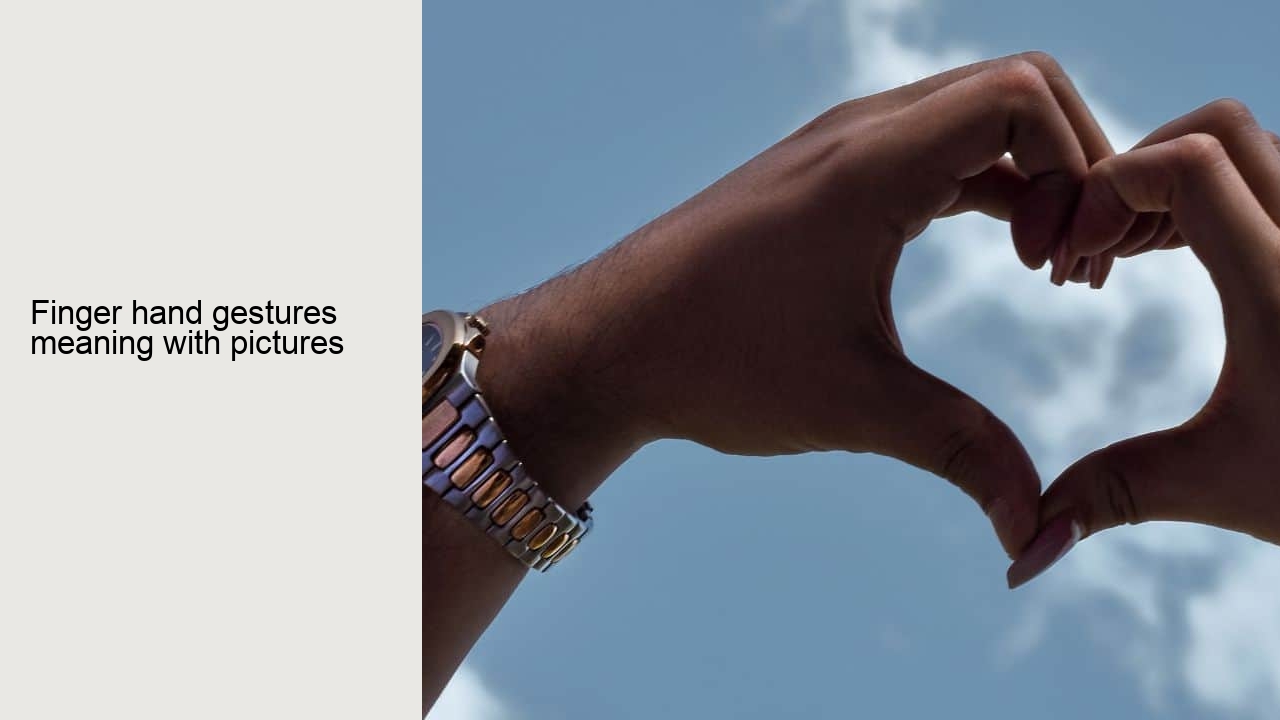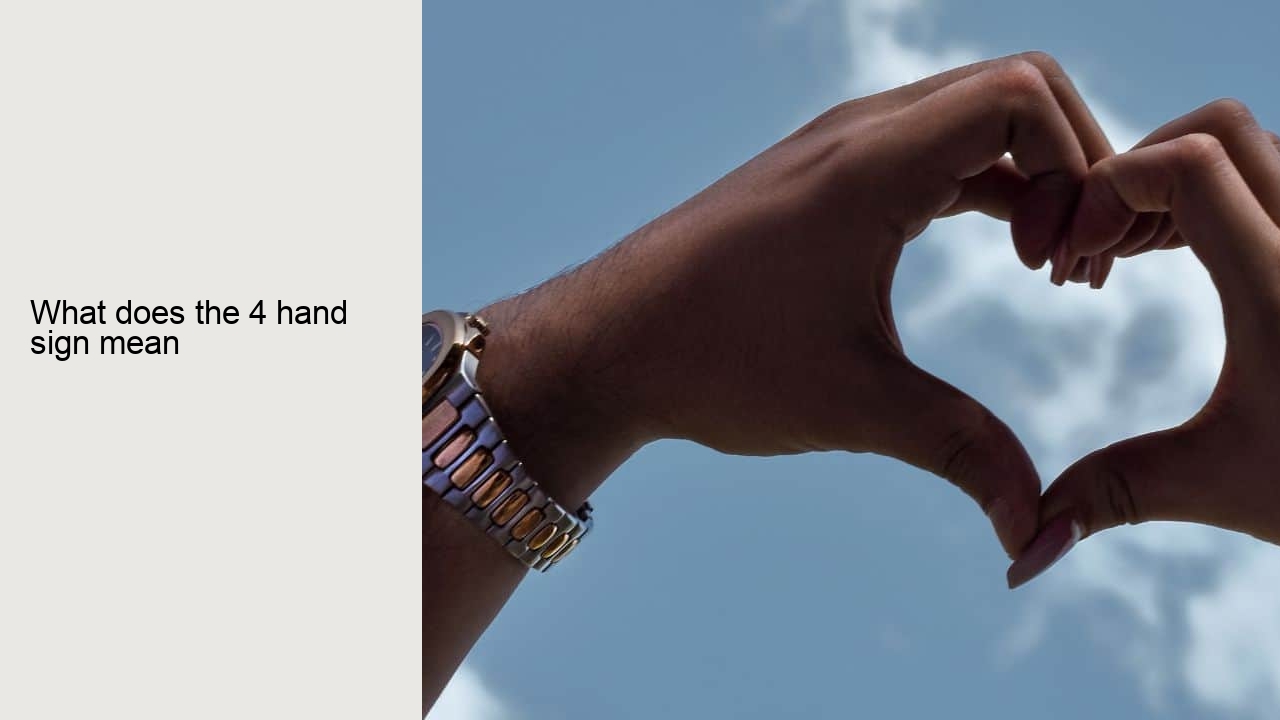
Another common hand sign among teens is the "shaka," which is made by holding up the thumb and pinky finger while keeping the other fingers curled down. This gesture, which originated in Hawaii, is often used among teens to indicate "cool," "good vibes," or to greet a friend.
The "OK" gesture, made by forming a circle with the thumb and index finger, is used to indicate agreement, or that something is satisfactory. This gesture is commonly used in the United States and many other countries.
The "hang loose" hand sign, which is made by holding up the thumb and pinky finger while keeping the other fingers curled down, is often used among teens to indicate relaxation, chill or a casual attitude.
In conclusion, hand gestures play a vital role in human communication and are an integral part of urban culture. From the thumb's up to the shaka sign, these gestures convey a wide range of emotions, ideas, and intentions. Understanding the meaning and significance of different hand gestures can help us communicate more effectively and build stronger connections with others.

It is important to note that the meaning of this hand sign can vary depending on the context and the intentions of the person making it, and it is always best to ask for clarification if you are unsure of the meaning of a hand sign.
Hand signs and gestures have been a part of human communication for centuries, and teenagers are no exception to this trend. From simple hand signals to more complex gang signs, teens use hand gestures to convey a wide range of meanings, both positive and negative. The following is a comprehensive list of teen hand signs and their meanings, with a focus on the nuances and subtleties that make them so intriguing and perplexing.
The fist bump, made by touching the knuckles of one's fist against another person's fist, is a casual gesture of greeting or agreement. This gesture is thought to have originated in the African American community and is often associated with sports and hip-hop culture.
Another hand gesture often seen in urban areas is the "I Love You" gesture, made by holding up the thumb, index finger, and little finger in the shape of an "I", while the middle and ring fingers are tucked under the thumb. This gesture is used to express love, affection, and support.

The fist bump, made by touching the knuckles of one's fist against another person's fist, is a casual gesture of greeting or agreement. This gesture is thought to have originated in the African American community and is often associated with sports and hip-hop culture.
One of the most universally recognized hand gestures is the thumb's up, which is used to indicate approval or agreement. This gesture has its origins in ancient Rome, where it was used to signal that a gladiator should be spared. Today, it is often used in casual conversation and social media to express support or endorsement.
The "rock on" hand gesture is made by holding up the index and pinky finger and is used to express agreement or support for music.
Another common hand gesture is the thumbs up. This gesture is often used to indicate approval, agreement, or support. The thumbs up can be used in a variety of contexts, from expressing satisfaction with a job well done to signaling that a plan or proposal has been accepted. This gesture is widely recognized and understood in most cultures, making it a useful tool for communication in a variety of settings.
The "I love you" hand sign, which is made by forming the letters "I" and "L" with the thumb and index finger and "Y" with the thumb and pinky finger, is often used among teens to indicate love or affection.
Holding up one finger can hold different meanings depending on the context and culture. In American Sign Language, it represents the number one. In some sports, it's a sign of a referral to the video assistant referee. Additionally, it can be used as a symbol of singularity or unity, as in the phrase "one for all, and all for one." On the other hand, it can also be considered as an offensive gesture in some cultures, as it can be interpreted as an expression of dominance or superiority. As with any hand gesture, the meaning can vary and it's important to be aware of the context and cultural implications before using this gesture.
Holding two fingers down can hold different meanings depending on the context and culture. In some sports, it is a sign of a referral to the video assistant referee. Additionally, it can be used as a symbol of disapproval or rejection, opposite to holding up two fingers which can be considered as a symbol of peace and goodwill. It can also be used as a sign of disappointment or defeat. As with any hand gesture, the meaning can vary and it's important to be aware of the context and cultural implications before using this gesture. It's important to note that in certain cultures, it might not have a specific meaning, and it's best to be cautious and respectful when using any hand gestures.
Holding two fingers down can hold different meanings depending on the context and culture. In some sports, it is a sign of a referral to the video assistant referee. Additionally, it can be used as a symbol of disapproval or rejection, opposite to holding up two fingers which can be considered as a symbol of peace and goodwill. It can also be used as a sign of disappointment or defeat. As with any hand gesture, the meaning can vary and it's important to be aware of the context and cultural implications before using this gesture. It's important to note that in certain cultures, it might not have a specific meaning, and it's best to be cautious and respectful when using any hand gestures.
Holding up two fingers can hold different meanings depending on the context and culture. In some countries like the United Kingdom, it's a symbol of peace and goodwill and also known as "V for Victory" sign. In other countries, it can be considered as an offensive gesture. In American Sign Language, it represents the number two. Also, in some sports, it's a sign of a referral to the video assistant referee. Additionally, it's also used as a symbol of binary opposition, such as good and evil, life and death, and so on. The meaning can vary, and it's important to be aware of the context and cultural implications before using this gesture.